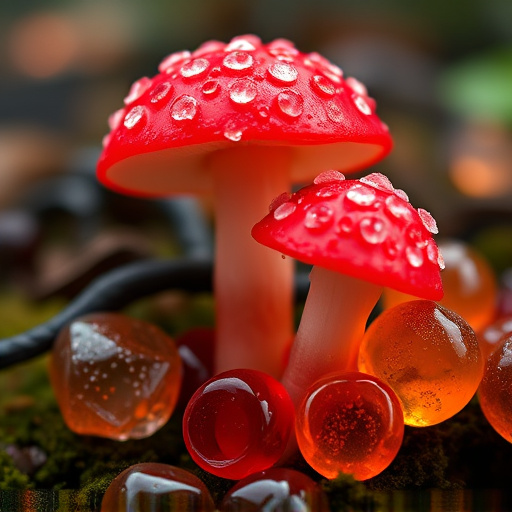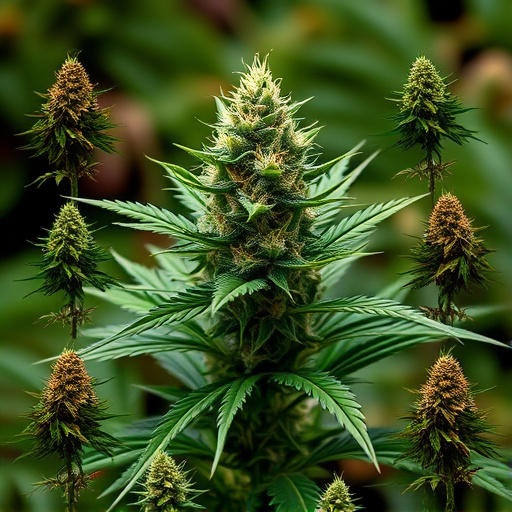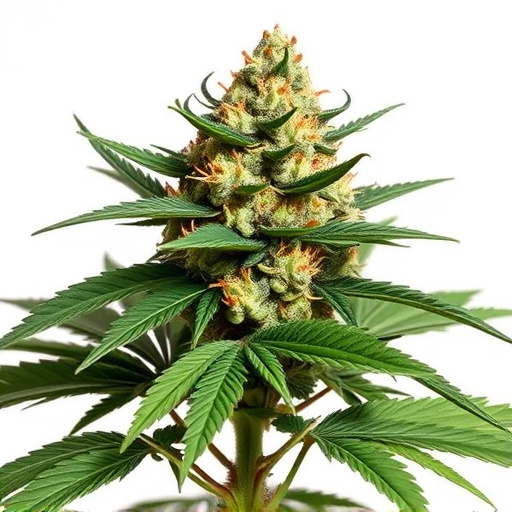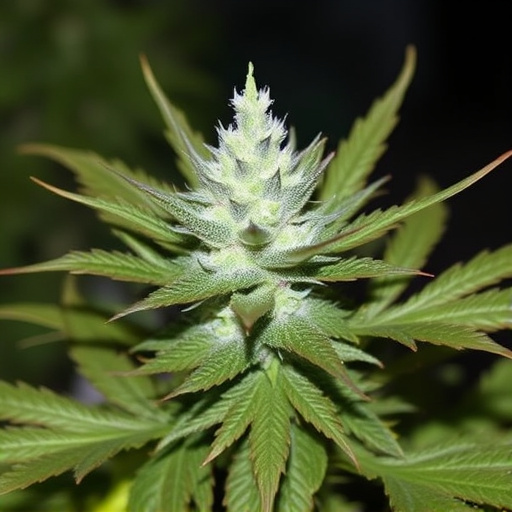Cannabis's effect on appetite, or "the munchies," is mediated through its interaction with the body's endocannabinoid system (ECS), especially through THC. High-THC strains from the top 10 strongest cannabis strains significantly enhance this effect due to their ability to activate ECS receptors. This property has therapeutic potential for treating conditions like cachexia but also carries side effects. Understanding these interactions is vital for both medical and recreational users, as it allows for informed strain selection based on desired appetite-related outcomes.
The “munchies,” a beloved yet somewhat infamous side effect of cannabis consumption, has sparked curiosity among users and scientists alike. This article delves into the fascinating science behind this phenomenon. We explore how cannabis interacts with our bodies through the endocannabinoid system, specifically focusing on THC’s role in triggering hunger. The piece also highlights the top 10 strongest cannabis strains known for inducing the munchies, offering insights into their unique profiles. Additionally, we uncover the neurobiology behind cannabis-induced eating, shedding light on the complex interplay of neural pathways and hormones responsible for this well-documented effect.
- Understanding Cannabis and Its Effects on Appetite
- – The role of THC and endocannabinoid system in triggering hunger
- – How cannabis strains differ in their appetite-stimulating properties
Understanding Cannabis and Its Effects on Appetite
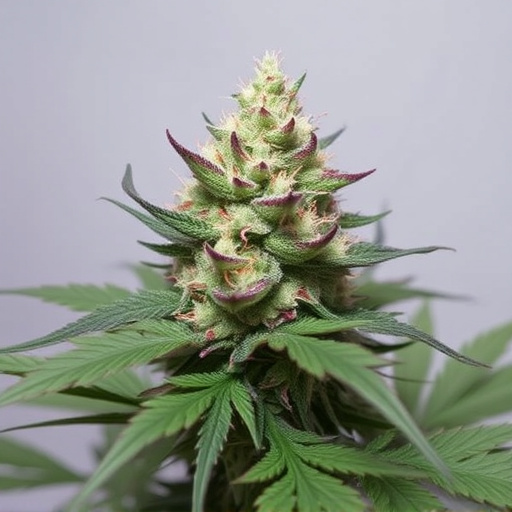
Cannabis has long been known for its ability to stimulate appetite, a phenomenon often referred to as “the munchies.” This effect is primarily attributed to the interaction between cannabis compounds and our body’s endocannabinoid system (ECS), which plays a crucial role in regulating various physiological processes, including hunger. When we consume cannabis, especially strains known for their high THC (tetrahydrocannabinol) content, it binds to receptors in the ECS, leading to increased appetite.
The top 10 strongest cannabis strains, often sought after by both medical and recreational users, typically have elevated THC levels, which can intensify these effects. While cannabis is enjoyed for its diverse therapeutic properties, its impact on appetite has significant implications, especially in the context of medical use for conditions like cachexia (wasting) associated with HIV/AIDS or cancer. Understanding how cannabis interacts with our bodies’ natural systems offers valuable insights into both its potential benefits and side effects.
– The role of THC and endocannabinoid system in triggering hunger
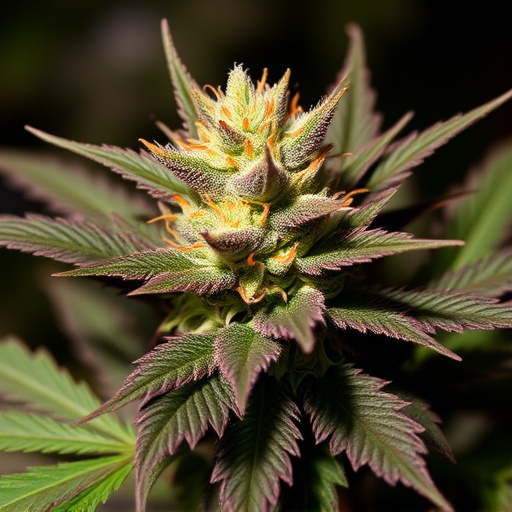
The human appetite and hunger are complex processes influenced by various factors, including hormones, neurotransmitters, and now, we understand, the endocannabinoid system (ECS). THC, or tetrahydrocannabinol, a prominent compound found in cannabis, plays a significant role in activating this ECS. When consumed, THC binds to specific receptors within the brain and body, triggering a cascade of physiological responses that can lead to increased hunger or what is commonly known as “the munchies.” This effect is particularly notable among users of top 10 strongest cannabis strains, where elevated THC levels can intensify these sensations.
The ECS is a recently discovered physiological system that helps regulate various bodily functions, including appetite, pain perception, and memory. It consists of endocannabinoid receptors, endogenous cannabinoids (like anandamide), and enzymes responsible for their synthesis and degradation. THC’s interaction with this system disrupts the balance, leading to heightened hunger sensations. This effect is not merely psychological; it involves real physiological changes in the brain and body, highlighting the intricate relationship between cannabis consumption and our bodies’ natural regulatory mechanisms.
– How cannabis strains differ in their appetite-stimulating properties
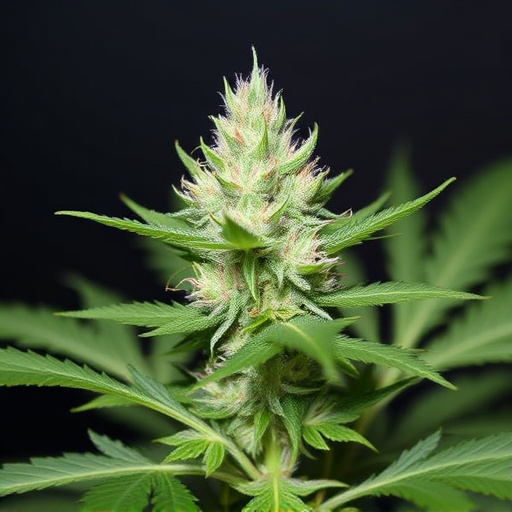
The impact of cannabis on appetite is a well-documented phenomenon, often referred to as “the munchies.” However, it’s important to understand that not all cannabis strains evoke the same level of hunger. The science behind this lies in the diverse chemical profiles and cannabinoid concentrations found in different strains. Among the top 10 strongest cannabis strains known for their potent appetite-stimulating effects are Indica dominant varieties rich in THC (tetrahydrocannabinol). These include Granddaddy Purple, OG Kush, and Blue Dream, which have been consistently celebrated for their ability to enhance hunger and satisfy cravings.
Conversely, Sativa strains, often favored for their invigorating effects, may not induce the same level of munchies. This is because they typically contain higher levels of CBD (cannabidiol) in relation to THC. Nevertheless, some Sativas like Super Silver Haze and Jack Herer have been noted for their subtle appetite-stimulating properties. The key takeaway is that cannabis strain selection plays a significant role in experiencing the munchies, with specific varieties catering to different preferences and desired effects.
In understanding the science behind the munchies, particularly through the lens of cannabis and its effects on appetite, it’s clear that THC and the endocannabinoid system play pivotal roles in triggering hunger. Moreover, different cannabis strains exhibit unique appetite-stimulating properties. While the top 10 strongest cannabis strains may vary in potency, they all contribute to this fascinating interplay between plant chemistry and human biology. By recognizing these dynamics, consumers can make informed decisions about their consumption, enhancing both enjoyment and overall well-being.
